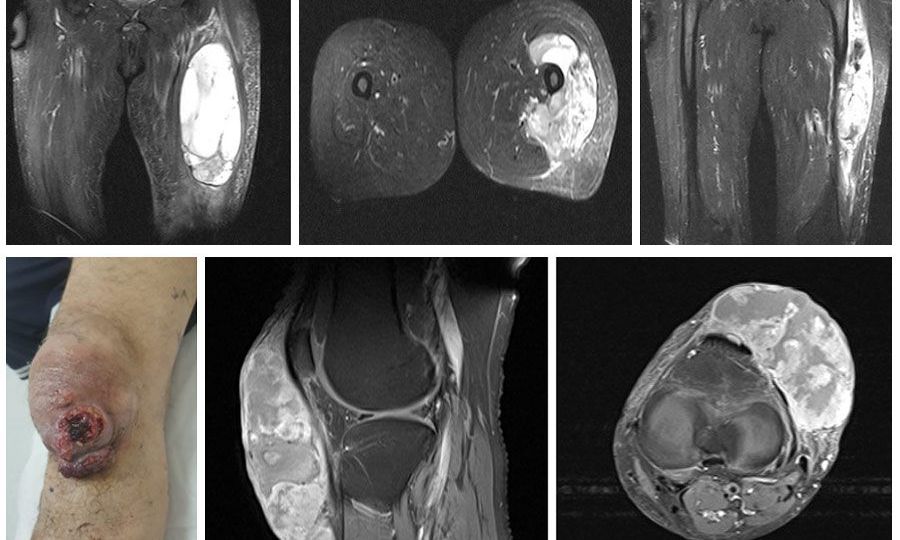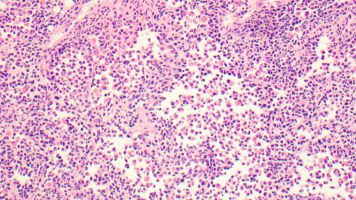
1. Overview of Rhabdomyosarcoma
Rhabdomyosarcoma arises from the soft tissues of the body, particularly from the skeletal muscles. These tumors can occur anywhere in the body, but they are most frequently found in the head and neck region, urinary and reproductive organs, and the limbs. Although the exact cause of RMS is not fully understood, it is believed to result from genetic mutations and abnormal cellular development.
There are several distinct subtypes of rhabdomyosarcoma, which are classified based on their appearance under a microscope and the molecular characteristics of the tumor cells:

- Embryonal Rhabdomyosarcoma (ERMS): This is the most common subtype and is typically seen in children. It often appears in areas such as the head, neck, and genitourinary tract.
- Alveolar Rhabdomyosarcoma (ARMS): This subtype is more aggressive and tends to occur in older children and adolescents. It often affects the limbs, torso, and trunk and has a poorer prognosis compared to ERMS.
- Pleomorphic Rhabdomyosarcoma: This rare subtype is usually diagnosed in adults and tends to occur in the limbs and trunk. It has a more aggressive nature and can be challenging to treat.
2. Genetic Risk Factors for Rhabdomyosarcoma
Genetic mutations play a significant role in the development of rhabdomyosarcoma. Several inherited genetic disorders have been associated with an increased risk of developing RMS. These include:
2.1 Li-Fraumeni Syndrome (LFS)
Li-Fraumeni syndrome is a rare inherited genetic disorder caused by mutations in the TP53 gene, a tumor suppressor gene. TP53 helps prevent the formation of tumors by regulating cell growth and repair. In individuals with Li-Fraumeni syndrome, the mutation leads to a loss of normal tumor suppression, resulting in an increased risk of various cancers, including rhabdomyosarcoma. Children with Li-Fraumeni syndrome are particularly susceptible to developing RMS, along with other cancers like leukemia, brain tumors, and breast cancer.
2.2 Neurofibromatosis Type 1 (NF1)
Neurofibromatosis type 1 is another genetic condition that predisposes individuals to rhabdomyosarcoma. It is caused by mutations in the NF1 gene, which is involved in cell growth regulation. Patients with NF1 have an increased risk of developing soft tissue sarcomas, including RMS. The risk of developing RMS in patients with NF1 is higher in younger individuals, particularly those under the age of 10.
2.3 Beckwith-Wiedemann Syndrome (BWS)
Beckwith-Wiedemann syndrome is a genetic disorder that results in overgrowth of certain body parts and an increased risk of various cancers, including rhabdomyosarcoma. It is caused by abnormalities in the 11p15 region of chromosome 11. Children with BWS are more likely to develop RMS, especially in the abdominal or genitourinary regions.
2.4 Costello Syndrome
Costello syndrome is a rare genetic disorder caused by mutations in the HRAS gene. Individuals with Costello syndrome have an increased risk of developing various cancers, including rhabdomyosarcoma. RMS in patients with Costello syndrome is more likely to develop in the head, neck, and limbs.
2.5 DICER1 Syndrome
DICER1 syndrome is another inherited condition that increases the risk of developing rhabdomyosarcoma. It is caused by mutations in the DICER1 gene, which plays a role in regulating RNA molecules within cells. Individuals with DICER1 syndrome are at higher risk for developing several types of cancer, including RMS.
3. Environmental and Lifestyle Risk Factors
While genetic factors are critical, environmental and lifestyle factors can also contribute to the development of rhabdomyosarcoma. These factors may interact with genetic predispositions, increasing the risk of RMS in susceptible individuals.

3.1 Exposure to Radiation
One of the most significant environmental risk factors for rhabdomyosarcoma is exposure to ionizing radiation. Children and young adults who have been treated with radiation for other cancers, such as leukemia, may have an increased risk of developing RMS later in life. Radiation therapy can damage DNA and cause mutations in cells, leading to cancerous growth. However, the risk depends on the dose and location of radiation exposure.
3.2 Chemical Exposure
Exposure to certain chemicals or carcinogens may increase the risk of rhabdomyosarcoma. These chemicals can damage the DNA within cells, increasing the likelihood of mutations that lead to cancer. Although there is limited research directly linking specific chemicals to RMS, certain industrial chemicals and environmental toxins have been associated with an elevated risk of various cancers. For example, prolonged exposure to benzene, a known carcinogen, has been linked to a higher risk of leukemia, which could have overlapping risk factors with RMS.
3.3 Viral Infections
Although there is no direct, conclusive link between viral infections and rhabdomyosarcoma, some research suggests that certain viral infections may contribute to the development of RMS. For example, the Epstein-Barr virus (EBV), known to cause infectious mononucleosis, has been linked to the development of some types of cancers, including lymphomas. It is hypothesized that chronic viral infections may increase the risk of mutations in cells that could lead to RMS. However, further studies are needed to establish a definitive link between viral infections and the development of rhabdomyosarcoma.
4. Age and Gender
Rhabdomyosarcoma is more commonly diagnosed in children, particularly those under the age of 10. The embryonal subtype of rhabdomyosarcoma, which accounts for the majority of cases, typically affects children aged 2 to 6 years. The risk of developing RMS decreases with age, and it is less commonly diagnosed in adults, although adult cases do occur, particularly with the pleomorphic subtype.
Gender also plays a role in the development of rhabdomyosarcoma. Males are generally at a higher risk of developing RMS compared to females. The reasons behind this gender disparity are not fully understood, but hormonal differences and genetic factors may contribute to the increased risk in males.
5. Family History and Hereditary Syndromes
Having a family history of rhabdomyosarcoma or other cancers may increase an individual’s risk of developing RMS. Although rhabdomyosarcoma is not typically inherited in a straightforward manner, individuals with a family history of soft tissue sarcomas or genetic syndromes that predispose to cancer may have an elevated risk.
Syndromes like Li-Fraumeni syndrome, neurofibromatosis type 1, and Beckwith-Wiedemann syndrome, as mentioned earlier, significantly increase the risk of rhabdomyosarcoma. Therefore, individuals with a family history of these conditions should be closely monitored for the development of RMS and other related cancers.
Rhabdomyosarcoma is a rare and aggressive cancer with a complex set of risk factors. While genetic mutations and inherited disorders play a significant role in the development of RMS, environmental exposures, age, gender, and family history are also important contributing factors. Understanding these risk factors is essential for early detection, prevention, and better treatment outcomes.
While some risk factors for rhabdomyosarcoma, such as genetic mutations, cannot be changed, other factors, such as reducing exposure to radiation and harmful chemicals, can potentially lower the risk. Individuals with a family history of RMS or related conditions should undergo genetic counseling and regular screenings to detect the disease in its early stages.
